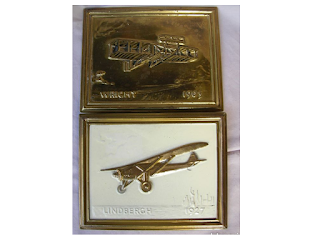The Rockwell B-1 Lancer
#bomber #usairforce #b1bomber #airforce #stealthbomber #bomberaircraft #bombers #b-1bomber #bomberplane
Subscribe here to our Youtube Channel ... And you will have the advantage of asking questions specific to you and you get quick answers to your situations ....
The Rockwell B-1 Lancer is a supersonic variable-sweep wing, heavy bomber used by the United States Air Force.
#bomber #usairforce #b1bomber #airforce #stealthbomber #bomberaircraft #bombers #b-1bomber #bomberplane
Mission of B1 Bomber
Carrying the largest conventional payload of both guided and unguided weapons in the Air Force inventory, the multi-mission B-1 is the backbone of America's long-range bomber force. It can rapidly deliver massive quantities of precision and non-precision weapons against any adversary, anywhere in the world, at any time.Features of B1 Bomber
The B-1B's blended wing/body configuration, variable-geometry wings and turbofan afterburning engines, combine to provide long range, maneuverability and high speed while enhancing survivability. Forward wing settings are used for takeoff, landings, air refueling and in some high-altitude weapons employment scenarios. Aft wing sweep settings - the main combat configuration -- are typically used during high subsonic and supersonic flight, enhancing the B-1B's maneuverability in the low- and high-altitude regimes. The B-1B's speed and superior handling characteristics allow it to seamlessly integrate in mixed force packages. These capabilities, when combined with its substantial payload, excellent radar targeting system, long loiter time and survivability, make the B-1B a key element of any joint/composite strike force. The B-1 is a highly versatile, multi-mission weapon system. The B-1B's synthetic aperture radar is capable of tracking, targeting and engaging moving vehicles as well as self-targeting and terrain-following modes. In addition, an extremely accurate Global Positioning System-aided Inertial Navigation System enables aircrews to navigate without the aid of ground-based navigation aids as well as engage targets with a high level of precision. The addition of a fully integrated data link (FIDL) with Link-16 capability provides improved battlefield situation awareness and secure beyond line of sight reach back connectivity. In a time sensitive targeting environment, the aircrew can use targeting data received from the Combined Air Operations Center or other command and control assets to strike emerging targets rapidly and efficiently. The B-1B's onboard self-protection electronic jamming equipment, radar warning receiver (ALQ-161) and expendable countermeasures (chaff and flare) system and a towed decoy system (ALE-50) complements its low-radar cross-section to form an integrated, robust defense system that supports penetration of hostile airspace. The ALQ-161 electronic countermeasures system detects and identifies the full spectrum of adversary threat emitters then applies the appropriate jamming technique either automatically or through operator inputs. Current modifications build on this foundation. Radar sustainability and capability upgrades will provide a more reliable system and may be upgraded in the future to include an ultra high-resolution capability and automatic target recognition. The addition of Link-16 and FIDL combined with associated cockpit upgrades will provide the crew with a much more flexible, integrated cockpit, and will allow the B-1 to operate in the fast-paced integrated battlefield of the future. Several obsolete and hard to maintain electronic systems are also being replaced to improve aircraft reliability.Stealth airplanes are aircraft that use advanced technology to reduce their radar cross-section (RCS), infrared signature, acoustic emission, and other forms of detection. Stealth technology is not a single method, but a combination of design features, materials, and techniques that work together to achieve a low-observable aircraft.
The main goal of stealth airplanes is to evade enemy detection and increase their survivability in hostile environments.
Stealth airplanes can perform missions such as reconnaissance, strike, electronic warfare, and air superiority with less risk of being intercepted or shot down by enemy air defenses.
Some of the most well-known examples of stealth airplanes are the Lockheed F-117 Nighthawk, the first operational stealth fighter; the Northrop Grumman B-2 Spirit, the only stealth bomber in service; the Lockheed Martin F-22 Raptor, the most advanced stealth air superiority fighter; and the Lockheed Martin F-35 Lightning II, the latest multirole stealth fighter.
Stealth technology is not perfect, however.
Stealth airplanes still have some degree of visibility to radar and other sensors, depending on the frequency, angle, distance, and quality of the detection system. Stealth airplanes also face challenges such as maintaining their stealth coating, avoiding contrails and heat trails, and coping with adverse weather conditions. Moreover, stealth technology is expensive and complex to develop and maintain, requiring a high level of expertise and resources.
Stealth airplanes are constantly evolving as new technologies and threats emerge.
Some of the future trends in stealth technology include incorporating artificial intelligence, quantum radar, metamaterials, plasma stealth, and biomimicry. Stealth technology is also being applied to other domains such as submarines, ships, tanks, drones, and satellites.
This is an Aerospace engineering concerned with the development of aircraft and spacecraft,
focused on designing aeroplane and space shutlle and it is a study of all the flying wing used within the earth's atmosphere. Also dealing with the Avionic systems that includes communications, navigation, the display and management of multiple systems. Also dealing with Aircraft mishap such as Accident and Serious Incident.
#aviation_jobs #aviation_courses #aviation_topic #aviation_study #aviation_basic
#aerospace_engineering #avionic_systems #aerospace_navigation #aircraft_mishap #aviation_accident #aviation_invetigation

